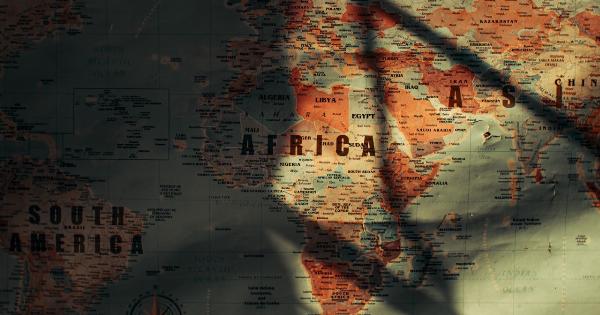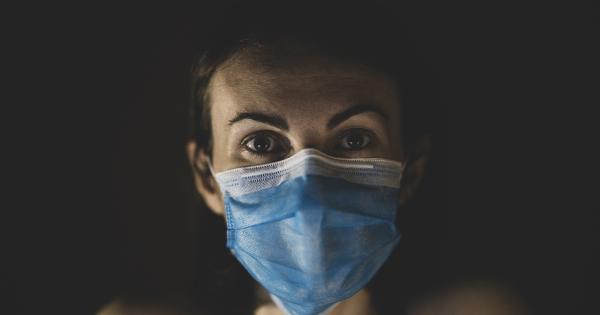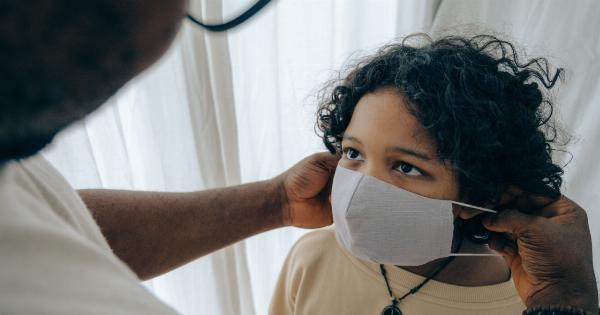The world is once again facing a major crisis with the current outbreak of Ebola virus disease (EVD).
The latest reports from the World Health Organization (WHO) indicate that the disease has now spread to several countries across Africa, with more than 6000 cases and 2000 deaths reported so far. The situation is rapidly worsening as the virus has mutated three times over the last few months, making it even more deadly and difficult to contain.
Mutation of Ebola Virus – What it Means
Ebola is a highly infectious virus that causes severe hemorrhagic fever. It spreads through contact with bodily fluids of infected patients, and there is currently no known cure or vaccine for it.
The virus has always been a major public health concern in Africa, but the latest outbreak has been particularly alarming because of the three-fold mutation that has taken place.
The first mutation of the Ebola virus was detected early on in the current outbreak, in the Guinean capital, Conakry.
This mutation led to the virus becoming even more contagious and infectious, which helped it to spread more rapidly among the local population. The second mutation, which occurred soon after, affected the glycoprotein of the virus, making it even deadlier and more difficult to detect.
According to experts, the third mutation of the Ebola virus that has taken place recently is by far the most alarming. This mutation has changed the nature of the virus, making it even more difficult to treat.
This is because the virus has now developed a resistance to drugs that were previously effective in treating Ebola.
The Impact of the Ebola Outbreak
Since the latest outbreak of Ebola, several countries across Africa have been affected, including Guinea, Liberia, Sierra Leone, and Nigeria.
The disease has also spread to other countries, such as the United States and Spain, through infected patients traveling to these destinations. The impact of the Ebola outbreak has been devastating on several levels:.
Healthcare System Overload
The healthcare systems of most African countries are already strained due to limited resources and a shortage of medical personnel.
The current outbreak of Ebola has overloaded these already overstretched systems, making it even more difficult to provide care for patients who need it the most. As a result, many people who are infected with the virus are not receiving the treatment they need, leading to more deaths and a higher rate of infection.
Economic Impact
The Ebola outbreak has also had a significant impact on the economies of the affected countries. Businesses have shut down, and many people have lost their jobs due to the restrictions that have been put in place to prevent the spread of the virus.
Some industries, such as tourism and transportation, have been hit particularly hard, which has further worsened the economic impact of the outbreak.
Social Impact
Communities in the affected countries have been deeply affected by the outbreak of Ebola. Many people have lost family members and friends, and there is a high level of fear and anxiety about the disease.
In some cases, entire villages have been quarantined, which has led to further isolation and stigmatization of those who have been affected by the virus.
Efforts to Control the Ebola Outbreak
Several organizations, including the WHO, the US Centers for Disease Control and Prevention (CDC), and Doctors Without Borders (Médecins Sans Frontières), are currently working to control the Ebola outbreak. The efforts to contain the virus include:.
Isolation and Treatment of Patients
One of the primary strategies for controlling the Ebola outbreak is to isolate and treat patients as soon as possible.
This involves setting up dedicated facilities for the treatment of patients infected with the virus and working to ensure that all patients are identified and treated promptly.
Tracing of Contacts
Health workers are also working to trace the contacts of those who have been infected with Ebola. This involves identifying anyone who has come into contact with infected patients and monitoring their health to detect any signs of Ebola infection.
Education and Awareness
Another important component of the Ebola control effort is education and awareness. This includes providing information about the disease, how it spreads, and how people can protect themselves from infection.
It also involves dispelling myths and misconceptions about the virus, which can lead to stigmatization of those who have been infected.
Challenges in Controlling the Ebola Outbreak
Despite the efforts of healthcare workers and organizations, several challenges remain in controlling the Ebola outbreak. Some of the main challenges include:.
Logistical Challenges
Transportation and logistics have been a major challenge in the Ebola response effort. The affected countries have limited infrastructure and poor road networks, making it difficult to get supplies and personnel to where they are needed most.
This has led to delays in treatment and containment efforts, which has allowed the virus to spread further.
Healthcare Worker Shortages
The shortage of healthcare workers in the affected countries has also been a major challenge.
Many healthcare workers have been infected with Ebola, and some have died, which has further strained the already stretched healthcare systems in these countries.
Security Concerns
Another challenge in controlling the Ebola outbreak has been security concerns. In some cases, healthcare workers and health facilities have come under attack by members of the local population who are suspicious of the response effort.
This has led to delays in treatment and increased the risk of infection.
Conclusion
The Ebola outbreak is one of the most significant health crises that the world has faced in recent times.
The latest mutations of the virus have made it even more deadly and difficult to contain, and the impact of the outbreak has been devastating on several levels. Efforts to control the Ebola outbreak are ongoing, but several challenges remain. It is crucial that the international community continues to work together to provide the support and resources needed to contain the virus and prevent further spread.



























